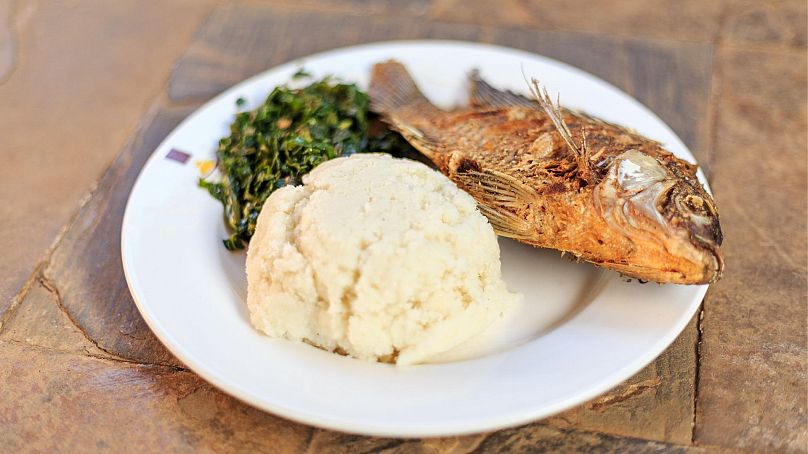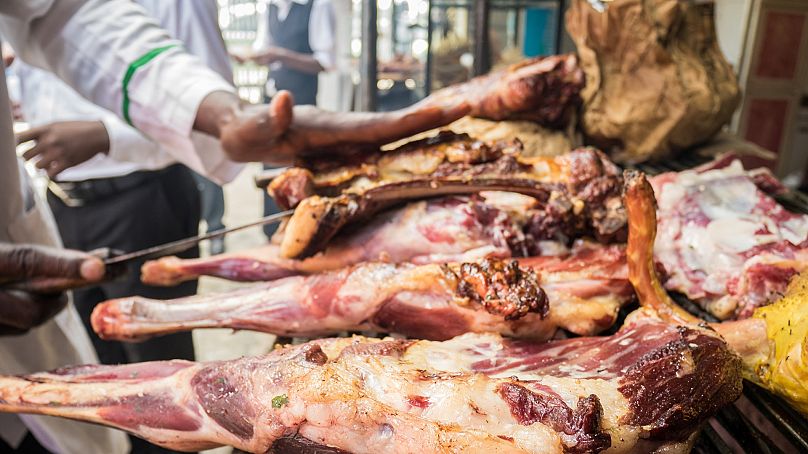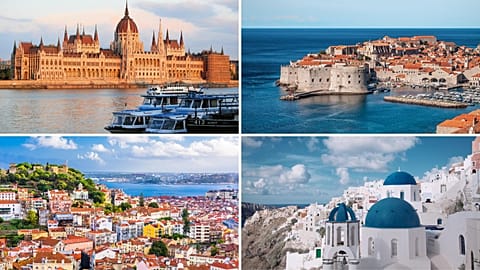With a rich food heritage, Kenya is ready to put itself on the gastronomic map.
With an Indian Ocean coastline, mountainous highlands and sprawling deserts, Kenya’s landscapes are rich and diverse.
The East African country is culturally diverse too, with over 40 ethnic groups living within its borders.
This cultural diversity means that the nation has many traditional cuisines, and Kenya’s tourist board is keen to boost tourism by promoting gastronomic experiences to travellers.
What is the most popular food in Kenya?
The country boasts traditional dishes such as Ugali, a corn meal often made from corn flour and served with a side of grilled meat called Nyama Choma. These dishes are already hugely popular in Kenya and have dominated Kenya’s tourism industry, which amassed $1.6 billion (€1.4 billion) from international tourists in 2021.
Susan Ongalo, Chief Executive Officer at the Kenya Tourism Federation believes that incorporating the use of digital technology into cultural food tourism will help to promote the East African country as more than just a safari destination.
“Gastronomy is a new niche for Kenya even though we have almost 50 cultures”, explains Ongalo. “Kenya is starting to look at different tourism products apart from tourists enjoying the beach. Kenya has realised that the cultural food space within tourism has been untapped.”
What food should I try in Kenya?
To help Kenya Tourism to realise its plan of creating experiences out of traditional food culture, the tourism cabinet collaborated with culinary training institution, Utalii College to put together dishes inspired by Kenya's diverse tribes.
Inspirational dishes include a Kisumu fish dish made with coconut and a coconut drink called Madafu, which is drunk in towns and cities along the coast of Kenya.
“Madafu is a non-alcoholic drink that is known to cleanse your system after indulging in food. The alcoholic version of it is called Mnazi”, explains Ongalo.
Kenya’s hospitality sector grew by over 56 per cent in 2022, and, according to Jackson Amutala, Pride Inn Hotels’ Group Director of Operations and Business Development, traditional gastronomy experiences have boosted room occupancy rates.
“Most of the time, when our guests arrive at our hotels, they want to experience Swahili food as we know it from our grandmothers. Infusing culture into our restaurants is important because it is who we are”, says Amutala.
It is hoped that the push for gastronomic tourism will help to build a food festival culture that will advance culinary heritage.
How food tourism is growing in Kenya
A study on gastronomic tourism development in Kenya by Josphine Jebotip reveals that in the western part of Kenya, gastronomic tourism has mainly been modelled around regional foods that are prepared and served in homes, restaurants, hotels, food kiosks and various ceremonies.
Comparatively, food tourism is very well advanced in developed countries, while efforts to grow the sector in developing countries like Kenya are still wanting.
“In fact the Kenya Tourism 2030 Blueprint pointed out that the product market and readiness of Kenya’s cultural and heritage tourism was average, though the country has a rich culture and heritage”, reveals Jebotip. “This is indicative of the existence of gastronomic tourism resources in Kenya which need to be developed”, she explains.
The study also shows that while there may be a strong push to promote Kenya’s gastronomy, food safety, hygiene and quality issues are other challenges that can slow the development of the sector.
“Food safety and quality problems associated with poor handling during production, collection, processing and distribution were strongly cited as key issues that threatened the development of gastronomic tourism in countries like Nigeria”, says Jebotip.
“As such, if the development of gastronomic tourism is to be successful in Kenya, food safety and hygiene protocols must be a top priority”, the study revealed.





















